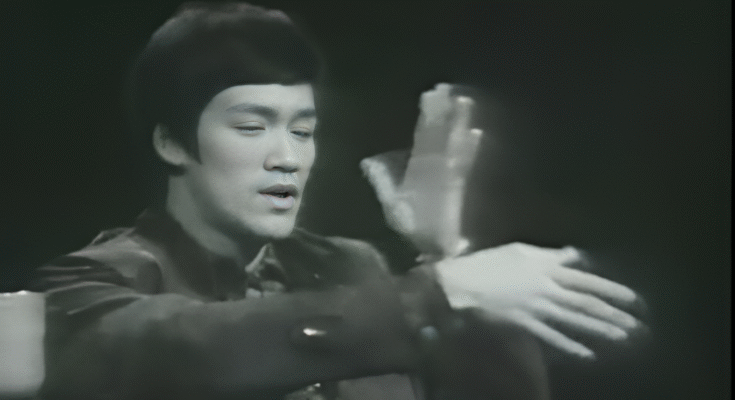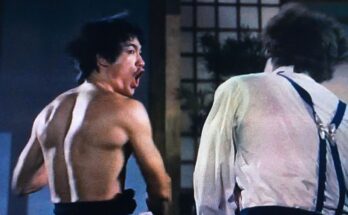Bruce Lee’s engagement with Tai Chi Chuan (Taijiquan) played a foundational role in shaping his martial philosophy and the development of Jeet Kune Do. Introduced to Tai Chi at a young age by his father, Lee Hoi-Chuen—a practitioner of Wu-style Tai Chi—Bruce Lee’s early exposure instilled in him the principles of balance, fluidity, and internal strength. This formative experience is evident in archival footage from 1958, where an 18-year-old Bruce is seen practicing Tai Chi with his father in Hong Kong .

In his later years, Bruce Lee’s perspective on Tai Chi evolved. During a 1971 interview on the Pierre Berton Show, he described Tai Chi as a “slow exercise” primarily practiced by the elderly, emphasizing its health benefits over combative applications. He demonstrated some movements, highlighting the continuous flow and the philosophy that “running water never grows stale,” underscoring the importance of constant motion and adaptability .
Despite his comments, Lee’s martial philosophy retained core Tai Chi principles. His emphasis on being “formless, shapeless, like water” and the concept of yielding to overcome strength mirror Tai Chi’s foundational teachings. Furthermore, techniques like his famed “one-inch punch” reflect the internal power generation methods found in Tai Chi, particularly the concept of “inch power” (cun jin) .

Bruce Lee’s integration of Tai Chi principles into his martial arts approach demonstrates his commitment to transcending traditional styles. By blending the soft, internal aspects of Tai Chi with the directness of other martial arts, he forged a path that emphasized adaptability, efficiency, and personal expression. This synthesis not only enriched his own practice but also left a lasting impact on martial arts philosophy worldwide.
For a visual insight into Bruce Lee’s thoughts on Tai Chi, you can watch the following video:



